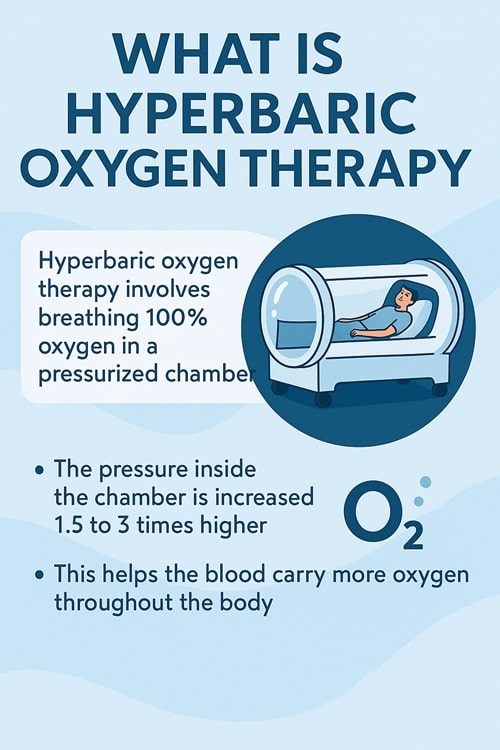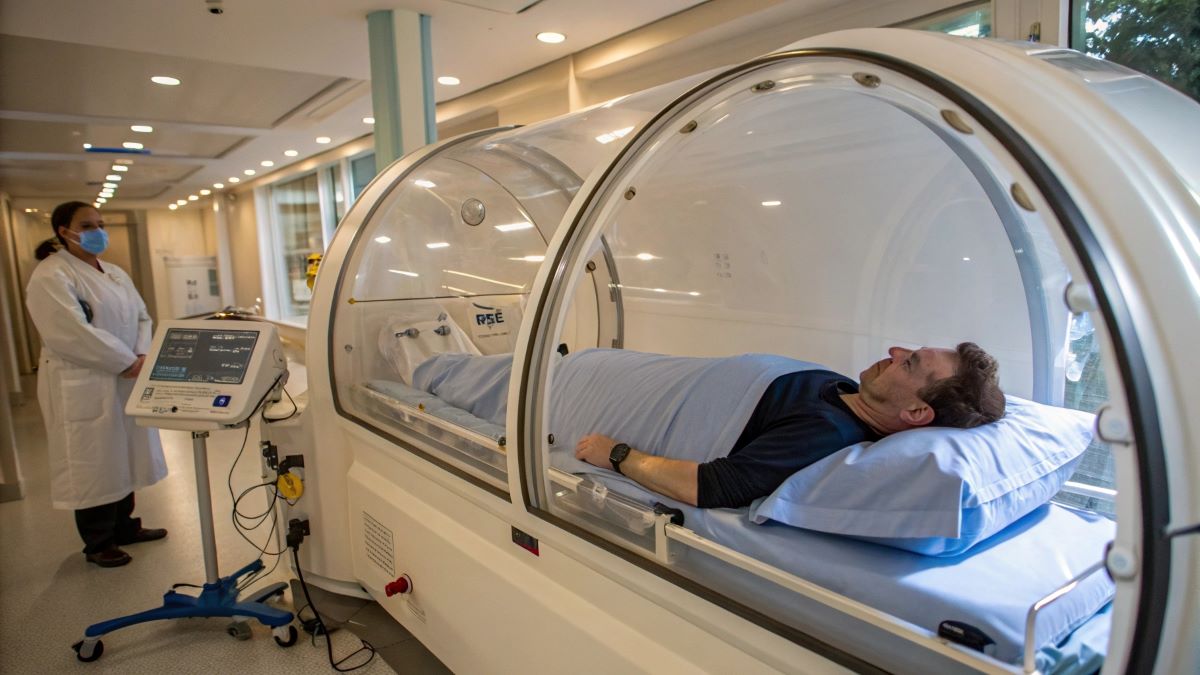New research shows that hyperbaric oxygen therapy provides sustained relief for up to five years.
- Treatment improved urinary symptoms for nearly 70% of patients with sustained benefits over 5-year period.
- Findings address key concerns about long-term efficacy that previously limited widespread clinical adoption.
- Research represents largest prospective study of radiation cystitis to date, involving five Nordic university hospitals.
A groundbreaking study has confirmed that hyperbaric oxygen therapy (HBO2) provides long-lasting relief for patients suffering from chronic radiation-induced cystitis, a debilitating bladder condition affecting cancer survivors who received pelvic radiation treatments.
The five-year follow-up of the RICH-ART trial, published in eClinicalMedicine this month, demonstrates that improvements in urinary symptoms remain stable for at least five years after treatment, addressing a critical gap in medical knowledge about this therapy’s long-term efficacy.
Treatment for a Hidden Epidemic
Chronic radiation-induced cystitis affects approximately 5-10% of patients who undergo radiotherapy for pelvic cancers, including prostate, rectal, and gynecological malignancies. Despite its prevalence, the condition often goes underreported and undertreated.
“The problems may be underreported since patient-reported outcome measures are not included in most oncology registries, and chronic radiation-induced adverse effects are typically treated by general practitioners or urologists rather than oncologists,” the researchers note.
Patients with this condition experience symptoms including painful urination, increased frequency, urgency, incontinence, and in severe cases, bleeding. These symptoms can significantly impact quality of life and often worsen over time as the bladder tissue becomes increasingly damaged by radiation-induced hypoxia, fibrosis, and vascular injury.
Dr. Nicklas Oscarsson from Sahlgrenska University Hospital in Sweden led this multicentre, randomized controlled trial conducted across five Nordic university hospitals in Sweden, Norway, Denmark, and Finland.
The Oxygen Solution

Hyperbaric oxygen therapy involves breathing 100% oxygen at increased atmospheric pressure inside a specialized chamber.
Patients in the study received 30-40 sessions of HBO2, breathing oxygen at 240-250 kPa for 80-90 minutes daily over 6-8 weeks.
The therapy works by increasing oxygen delivery to damaged tissues, stimulating angiogenesis (formation of new blood vessels), reducing inflammation, and promoting tissue healing. In radiation-injured tissue, this can help reverse the hypoxic conditions that prevent normal healing processes.
The RICH-ART follow-up study tracked 70 patients for five years after receiving hyperbaric oxygen therapy. The researchers used the Expanded Prostate Cancer Index Composite (EPIC) urinary score, which measures bladder symptoms on a scale of 0-100, with lower scores indicating more severe symptoms.
Impressive Long-Term Results
Prior to treatment, patients had a mean EPIC urinary score of 46.6 points, indicating severe symptoms. Six months after HBO2 therapy, this improved to 64.6 points – a substantial increase of 18 points.
Most importantly, this improvement was maintained at the five-year mark, with patients showing a sustained 19.1-point improvement from baseline.
But is this improvement actually meaningful for patients?
Yes – the clinical significance threshold for this scale is just 9 points, meaning the observed improvement was more than twice what would be considered minimally important to patients.
Among the 70 patients followed, 48 (68.6%) were classified as “responders” who showed significant improvement at the six-month mark. These patients maintained their benefits throughout the five-year period, with a remarkable average improvement of 22.9 points at the five-year mark.
Even more encouraging, five patients initially classified as “non-responders” showed delayed benefits, with significant improvements appearing at the one-year mark and beyond, suggesting that six months may be too early to fully assess the therapy’s effects.
- The EPIC (Expanded Prostate Cancer Index Composite) urinary score measures bladder symptoms on a scale of 0-100, with higher scores representing better function. A clinically meaningful improvement is defined as ≥9 points.
- Responders showed significant improvement at 6 months after treatment that was maintained through the 5-year follow-up period. Non-responders initially showed little change but some experienced delayed benefits after the first year.
- Data source: RICH-ART trial conducted across five Nordic university hospitals (2012-2022).
Breaking Treatment Barriers
Despite growing evidence supporting its efficacy, hyperbaric oxygen therapy is not yet widely integrated into clinical guidelines for radiation-induced cystitis. Often, it’s reserved as a last-resort option for patients who have failed other treatments.
“One objection to prescribing HBO2 for chronic radiation-induced adverse effects in the pelvic region has been the lack of evidence for long-term benefits,” the researchers explain. This study directly addresses that concern, showing benefits persist for at least five years.
Beyond symptomatic improvement, previous research has demonstrated that HBO2 treatment can reduce healthcare costs by 37% compared to standard care, while significantly decreasing the need for invasive procedures, blood transfusions, and even reducing mortality.
(Ed. note: This cost-benefit analysis comes from a separate study cited by the researchers, not from the RICH-ART trial itself.)
Study Limitations
The researchers acknowledge several limitations to their study.
- The trial was not blinded, and there was no long-term control group for comparison. This was partly due to ethical considerations, as withholding a potentially beneficial treatment for five years from patients with severe symptoms would have been problematic.
- Additionally, the study was terminated six months early due to administrative constraints and funding issues, resulting in missing data for some participants at the five-year mark. However, sensitivity analyses indicated that the results remained robust despite these limitations.
Future Directions
This research opens several avenues for future investigation. The variability in patient responses suggests a need to identify predictors that could help guide treatment decisions. Some evidence indicates that patients receiving 40 HBO2 sessions had fewer symptom recurrences than those receiving 30 sessions, highlighting the need for dose-response trials.
“A deeper exploration of the biological and clinical factors influencing treatment response could help tailor interventions more precisely, select patients, and optimize outcomes,” the researchers conclude.
For the millions of cancer survivors worldwide who received pelvic radiation, this research offers hope that the often-debilitating urinary symptoms they experience might have an effective, long-lasting treatment option.



